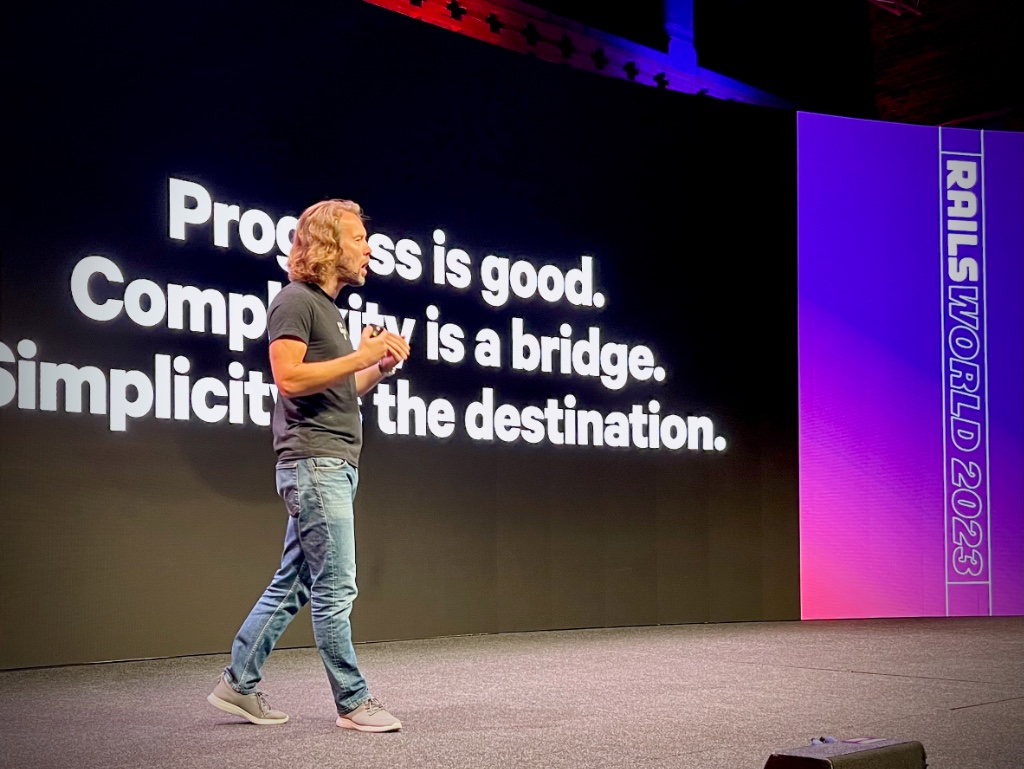It was the turning point in a conversation that had started a few minutes after our flight departed from Amsterdam. We were on KLM and seated in the exit row. Like most, if not all, European airlines, you can’t have anything under the seat in front of you when you’re in the exit row. So, when the bell dinged, I fetched my backpack from the storage compartment above, pulled out my laptop, and put my bag onto the floor. That was my mistake.
“You have to put your bag up. The lady will come by and tell you to put it up if you don’t,” the man sitting next to me said sternly. He had the tone of voice people use when they’re policing you.
“No, it’s fine,” I replied calmly, “It’ll be OK. I won’t need to put it back up again until we’re on the descent into Berlin.”
He pointed to the space under the seats and said, “No, this has to be clear. This is the exit row. They’re going to tell you. You have to put your bag up. You can’t leave it there.”
“I’m pretty sure it’s fine,” I replied with a thin smile, trying to not let him get to me. ”But, if I’m wrong and they ask me to put it up, I’ll be happy to. Will that work?”
He snorted, narrowed his eyes, and then asked with a sneer, “Where are you from?”
Oh shit, I thought. For a split second, I thought about avoiding the question. But then I decided to lean into it. “I’m from the US,” I replied.
“Pppht. That explains a lot.”
That cracked my calm. “You don’t need to be an asshole about it,” I replied. Maybe not my best moment, I admit.
“No,” he replied, “you’re the asshole for leaving your bag down there.”
I drew a deep breath. Then I said, “Look, I’m following the rules as I understand them. I already said if the attendant wants me to put my backup up, I will. Gladly. Not a problem.”
He huffed and muttered something in Dutch that I couldn’t follow. I didn’t say anything back. Instead, opened up my laptop and tried to focus on other things.
Not long after, a flight attendant came down the aisle. He waved her down and said, “Look. This guy has his bag under the seat. It’s not allowed. Tell him to put it up.”
“No,” she replied, ”it’s OK until we need to land. Then he‘ll have to put it back up.”
He switched to Dutch and explained a bit more. I didn’t understand most of it, of course, but I caught the vibe of it. He was definitely not happy with the American sitting next to him. The flight attendant looked at me and asked in English if I understood. I said, “Not really, but I understood enough. What would you like me to do?”
She smiled, and said, “It’s OK. You can leave your bag there.”
The man in the seat next to me huffed again, turned, and looked out the window. Surprisingly, I didn’t feel any sense of pleasure at being right. There wasn’t any smug feeling of satisfaction. Instead, I was annoyed that I had let the guy get to me, even a bit.
I mused on whether I should say anything more. I really wanted to dig into the topic of why my nationality mattered. I decided against it, however. Continuing an uncomfortable conversation with a stranger in the exit row on a short flight just didn’t seem worth it.
So, I typed on my laptop and tried to let it go. When the engines cut back a bit later for the initial descent, I packed up and put my bag back into the overhead bin. And I was happy to get off the plane after we landed and disembarked.
On reflection, I wish I had asked the Dutchman if there was a reason he was concerned about keeping the floor clear, other than just following the rules. Was he an anxious traveler? Did he have a sense of claustrophobia? I doubt any of that was the case. If it were, however, I hope I would have taken the conversation in a different direction by being happy to keep my laptop down but put my bag back up.
But really, the question, “Where are you from?” and my reaction to it is where I get the real value in reflecting on this encounter. It’s such a loaded question in so many contexts. It’s a way to make assumptions about you. It’s a way to make you the “other.” And, among all the other things we need in the world right now, it’s a whole lot less of making people the “other.”




